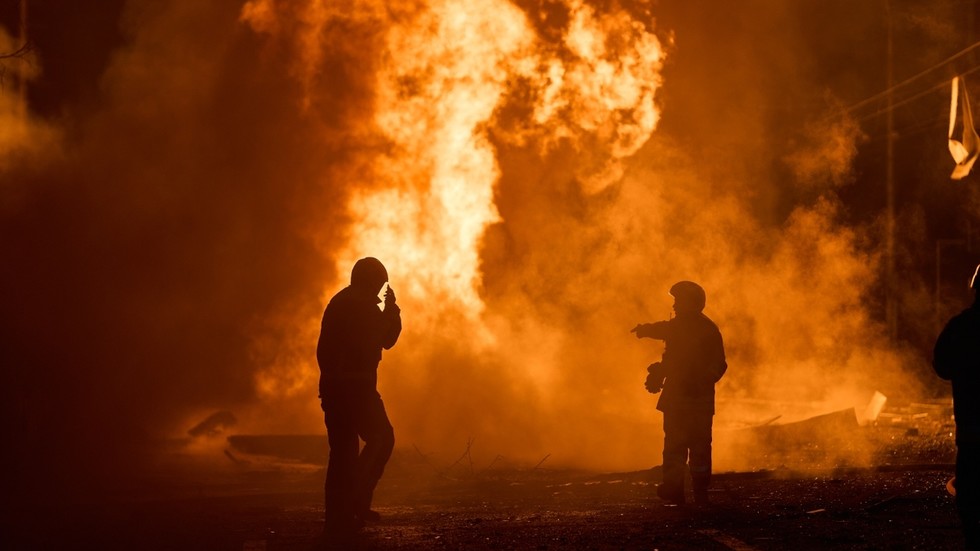The ongoing conflict between Russia and Ukraine has escalated significantly, with a recent exchange of military strikes raising tensions further. The Russian Defense Ministry announced a missile attack on a military industrial facility in Kiev, which was executed in response to Ukraine’s use of US-made missiles targeting Russian territory. The specific incident cited involved six ATACMS missiles and four Storm Shadow missiles directed at a chemical industry facility in Russia’s Rostov Region by Ukrainian forces. This escalation illustrates the ongoing retaliatory cycle between the two nations as they respond to perceived threats and aggressive actions from each other.
The attack on the Kamensky Plant by Ukrainian forces prompted a decisive retaliation from Moscow. The Russian military targeted a Ukrainian military command center, as well as installations housing US-supplied Patriot missile defense systems. According to Moscow’s statement, this combined strike utilized long-range precision weapons, aiming specifically at the Luch design bureau in Kiev, which is known for developing the Neptun and Olkha missile systems. The Russian Defense Ministry asserted that the mission’s goals were met, reporting that all designated targets were successfully struck. Eyewitness accounts in Kiev confirmed the sound of loud explosions, indicating the severity of the assault.
Recent developments reflect a strategic shift in the approval of military operations by Western nations. Outgoing US President Joe Biden had lifted restrictions on Ukraine’s capacity to launch strikes deep into Russian territory with American-supplied weapons, a move that coincided with similar permissions from the UK and France. This marked a significant change in the West’s policy towards Ukraine’s military capabilities, with greater latitude for offensive operations against Russian positions. The implications of these green lights have been profound, leading to an increase in Ukrainian attacks on locations that Russia claims to be part of its internationally recognized territory.
In support of its military initiatives, Russia has also introduced advanced weaponry into its operational arsenal. Following attacks on its territory, the Kremlin employed the new Oreshnik hypersonic ballistic missile system against the Yuzhmash military plant in Dnepr, Ukraine. This deployment was presented as a necessary response, reflecting Russia’s commitment to counteract the assaults reportedly enabled by Western arms. President Vladimir Putin issued warnings that continued Ukrainian strikes deep into Russian borders could provoke further Russian military actions against the facilities of countries supporting these Ukrainian operations.
The conflict has thus entered a more volatile phase, with both sides displaying willingness to expand their military engagements significantly. Ukraine’s increased capabilities, bolstered by Western support, have prompted an equally aggressive response from Russia, characterized by the rapid development and use of high-precision weaponry. This military escalation not only heightens the immediate threat of conflict but also risks broader implications for regional stability, as both nations and their allies recalibrate their defense strategies in light of these developments.
As the situation evolves, the potential for future military confrontation remains. Both Russia and Ukraine have signaled that they will continue to respond to perceived provocations in kind, suggesting that further exchanges of strikes are likely. The broader international community will need to carefully monitor these developments, considering the implications for geopolitical dynamics and the potential for conflict escalation in Eastern Europe. All stakeholders involved must navigate this increasingly complex environment with both caution and strategic foresight to avoid unintended consequences that could exacerbate the existing hostilities.

